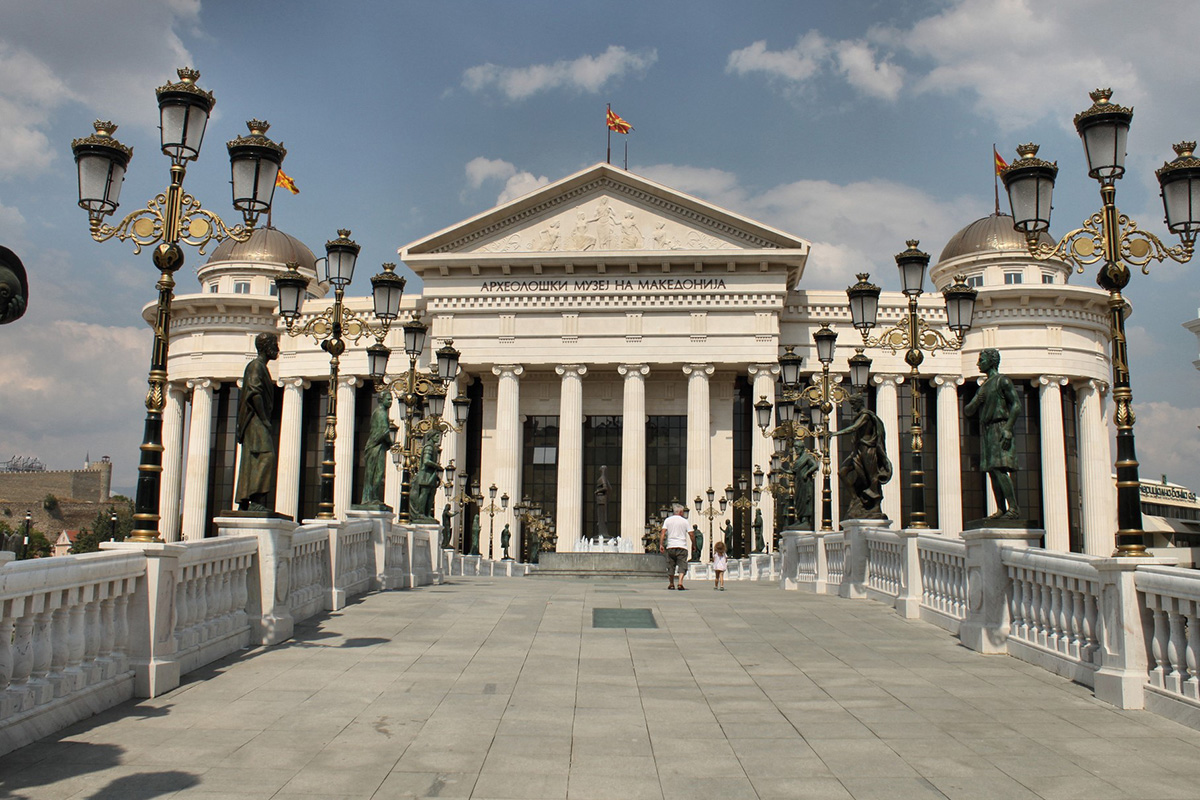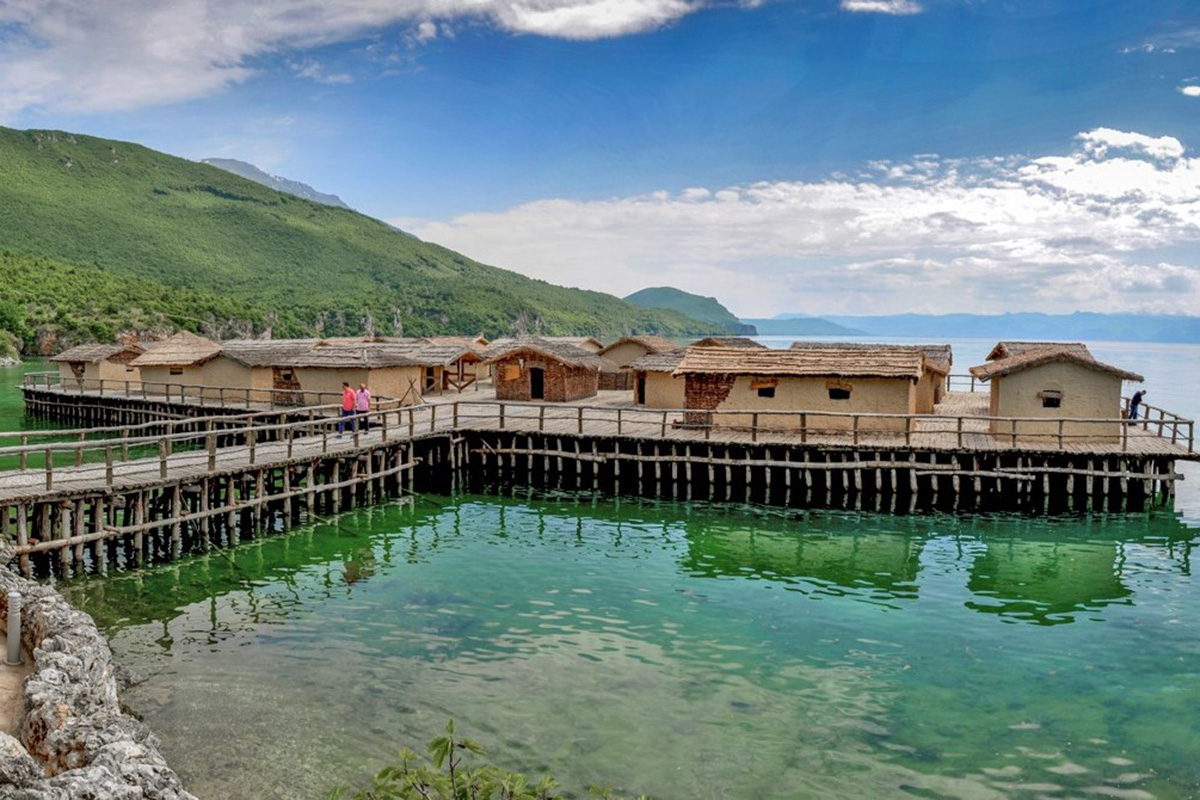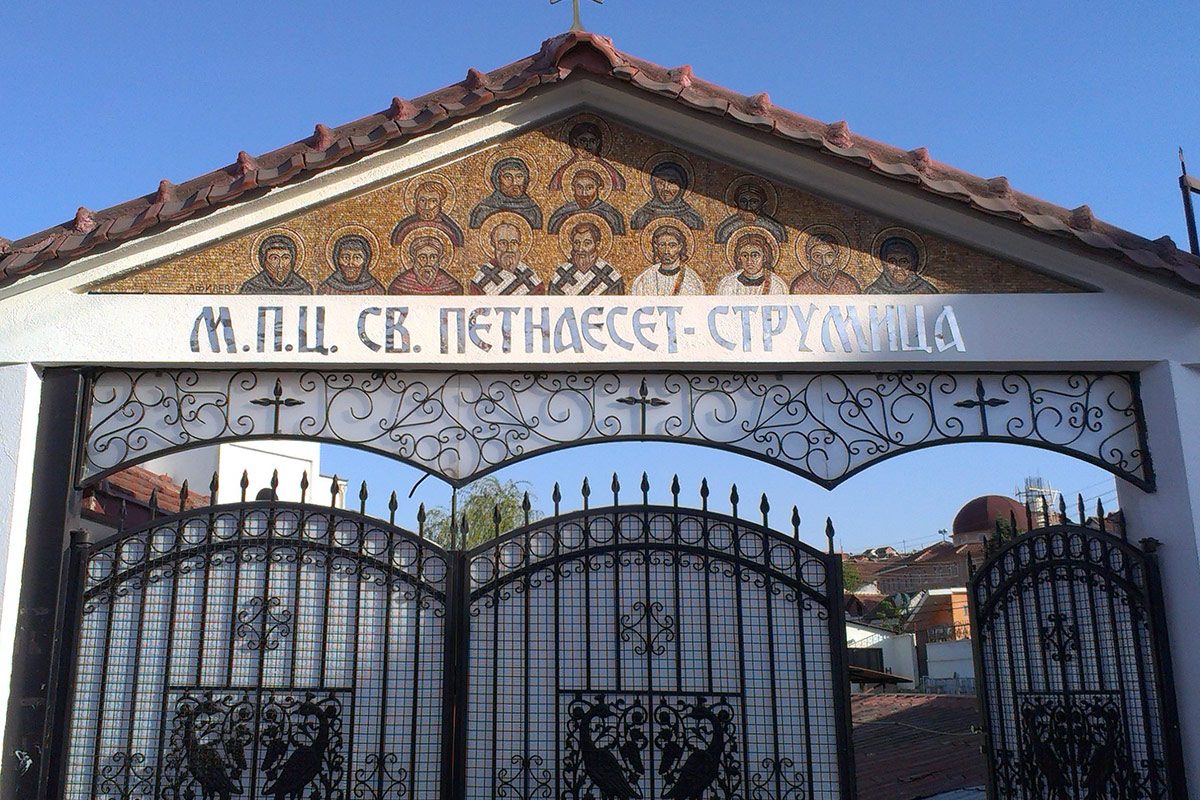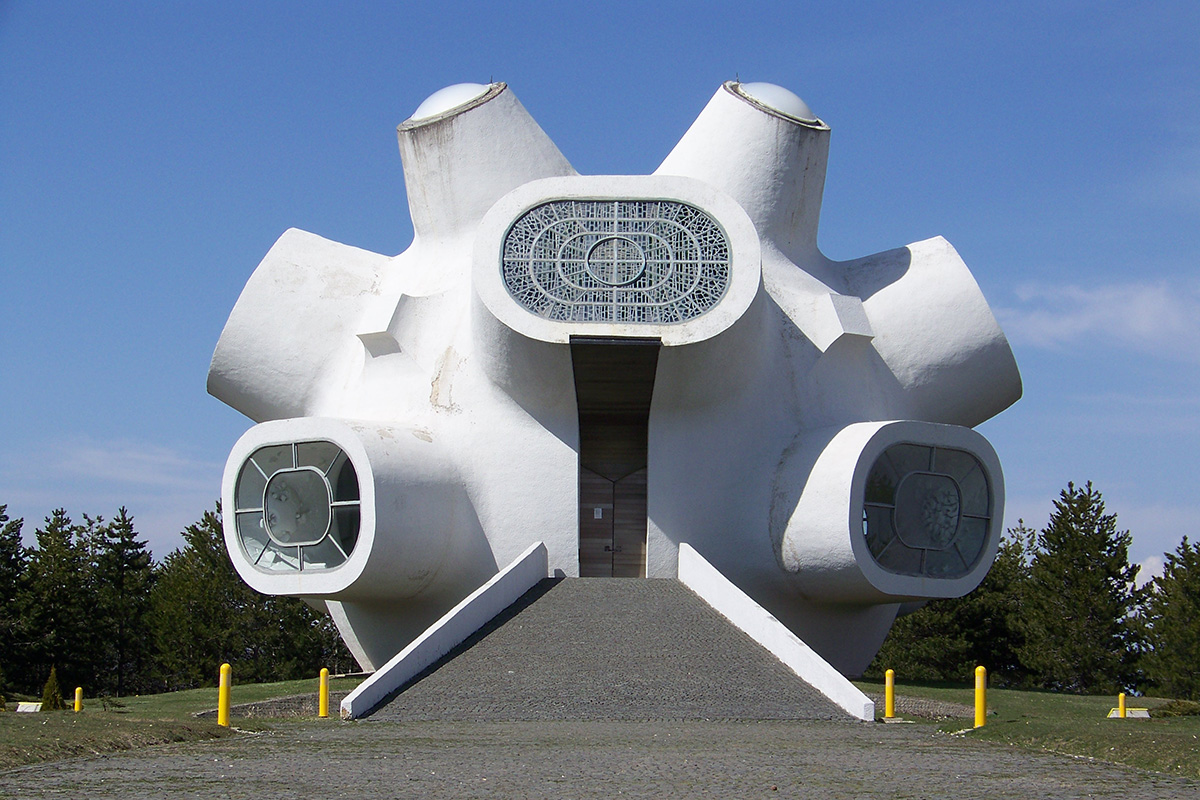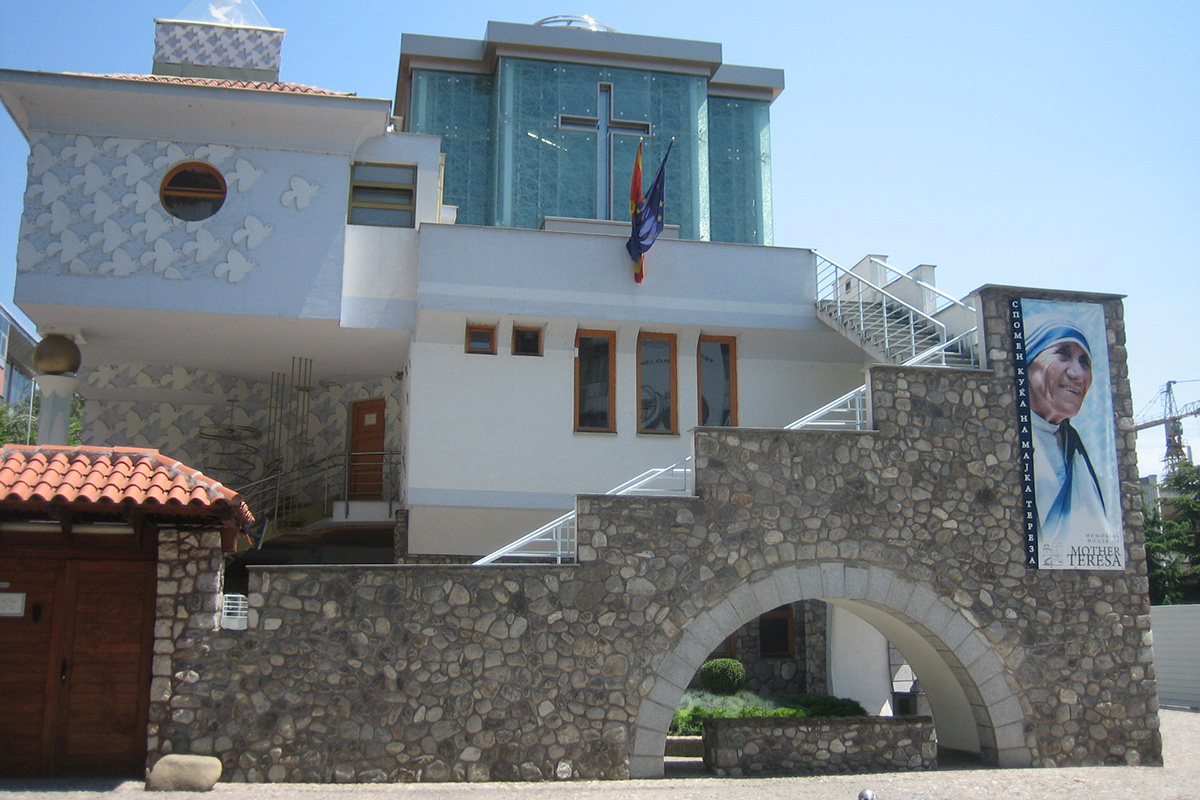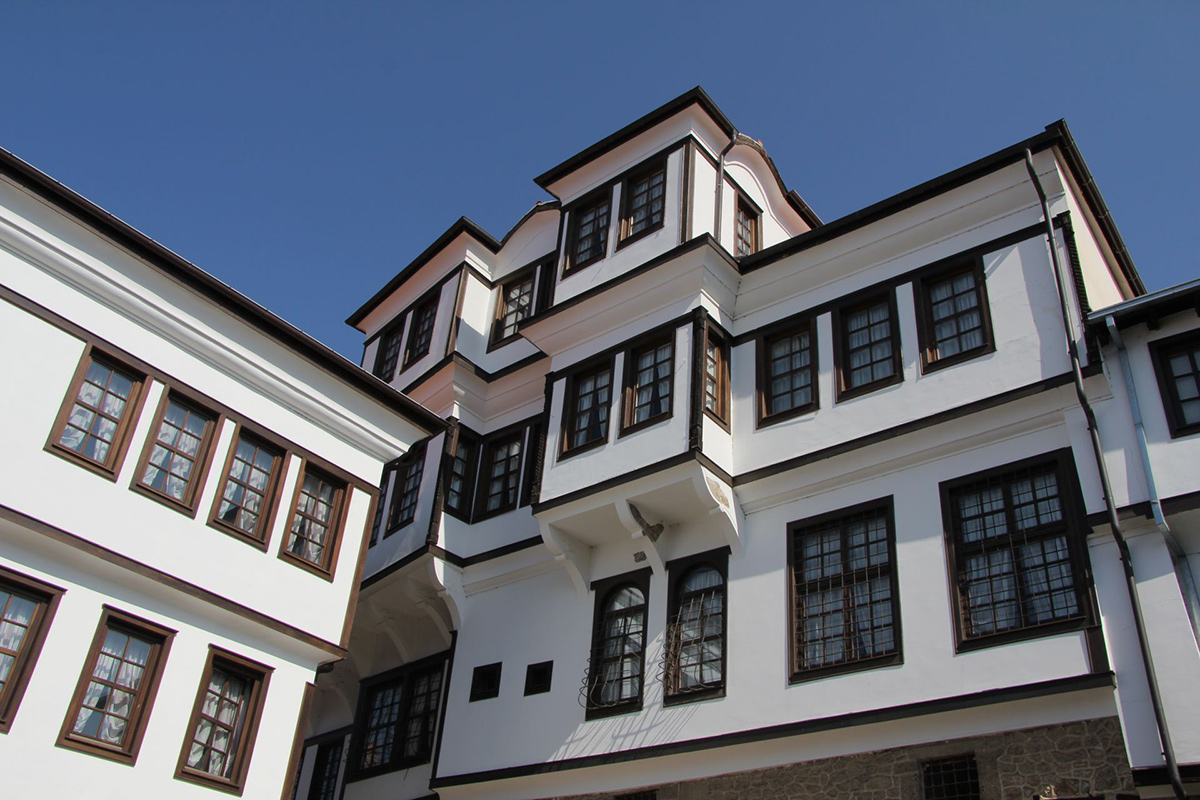Archaеоlogical, cultural heritage and museums
Archaeological Museum - Skopje
Archaeological Museum Skopje is located in the capital of Macedonia and it was officially opened as a National Institution from the highest rank in October 2014. It is a part of the project, best known as Skopje 2014 and it is a real treasure that consists of over 6000 artifacts from different localities all over the country. The permanent exhibition is divided into several departments: prehistoric archaeology, ancient archaeology, medieval archaeology and the Ottoman period, epigraphy and stone sculptures, numismatics cabinet, anthropology, and archaeozoology. Besides the rich archaeological exhibition, the museum also includes glass cabinets, 14 wax figures, 83 paintings, video animations, and mosaics of the valuable cultural heritage.
For detailed information about the exhibit and the opening hours consult the official web site: http://amm.org.mk/
Bay of Bones - Ohrid
Bay of Bones is a Museum on Water and authentic reconstruction of a pile-dwelling settlement, located in approximately 16km from the city of Ohrid. The underwater archaeological excavations in the waters of the Ohrid Lake started in 1997, but the museum was officially opened in 2004. In the course of the excavations performed until now were registered 6000 remains of wooden piles at the bottom of the lake at depth of 3-5m which were the support of a wooden platform on which functioned twenty prehistoric small houses built also of wood. Rich documentation and artifacts are showing that the Bay of Bones is dating back between 1200 and 700 BC, precisely it is the period of the late Bronze Age and Early Iron Age. The Bay of Bones represents an attractive complex that consists of a reconstructed settlement over the waters of the lake, Roman Castrum which is conserved and restored and it is the seat of the Diving Club if you want to experience the underground world of the lake.
Opening hours: from April to October 9 am until 6 pm; October to March 9 am until 4 pm.
Ethnological Museum of Jone Eftimovski - Podmochani, Resen region
Ethnological Museum of Jone Eftimovski is located in the small village Podmochani, part of the Prespa region, in the private house of Mr. Jone Eftimoski, a great collector of the folklore Macedonian treasure. It has a collection of over 160 folklore costumes from the end of the XIX and the beginning of the XX century as well as samples of jewelry from different regions of Macedonia. He is also the guide of this small Museum and he is the one presenting the costumes and the way of living in that historical period and who are discovering the idea of turning his private property into a symbol of the great Macedonian tradition.
Opening hours: every day, but please confirm your visit with the owner.
Heraclea Lyncestis - Bitola
Heraclea Lyncestis is an archaeological site located 2km from the city of Bitola. The city was founded by Philip II Macedon in the 4th century BC. The city was named in honor of the mythological hero Heracles, very popular among the Macedonian kings and the population. Situated on the most famous road Via Egnatia, the connection between the Adriatic and Aegean coast, Heraclea, the first centuries after Christ, reached its highest level of civilization. Objects discovered from the time of the Roman rule are the portico of the courtroom, the baths used until the 5th century AD, the magnificent theatre and votive monuments. In the early Christian period, Heraclea was an important Episcopal seat and religious center. Despite the remains of the Small Basilica and the Episcopal residence, on this archaeological site is one of the most beautiful floor mosaics ever excavated in the country, dating from the 5th century. Filled with thousands of small stones placed in perfect harmony, it reveals the story of Christianity and the spiritual life of the population.
Opening hours: from April to October 9 am until 6 pm; October to March 9 am until 4 pm.
Holocaust Memorial Center for the Jews of Macedonia - Skopje
Holocaust Memorial Center for the Jews of Macedonia is located in the capital of the county and it was officially opened on 10th March 2011. The Memorial Center is built in the former Jewish Quarter in Skopje where was concentrated the Jews life until their deportation in the concentration camp Treblinka in Poland in 1943. The professionally guided tour inside the Memorial Center reveals the life of the Macedonian Jews in different historical circumstances from their arrival up to present.
Opening hours: from Tuesday – Friday 9 am to 7 pm; Saturday and Sunday from 9 am to 3 pm; closed on Monday.
The archaeological cite Holy Fifteen Tiberiopolis Martyrs - Strumica
Holy Fifteen Tiberiopolis Martyrs is an archaeological site located in the city of Strumica. Tiberiopolis used to be the name of the city and the Holy Fifteen Tiberiopolis Martyrs are Christian saints living in the 4th century. They lost their lives in the name of the Christian beliefs and they were executed. During the excavations, the archaeologist discovered a three-nave basilica with marble floors and mosaic decorations, like most of the early Christian tombs painted with crosses and reveals the truth about the events of the 4th century on this place. In the 7th century, the city was destroyed by the Avars and the tombs were buried. In the 9th century, many churches were built and renewed and over the tombs of the martyrs was built a cross-shaped church that consists of one of the oldest fresco paintings in Macedonia. During the Ottoman period, the church was destroyed. In 1921, the revival of the cult was marked by building a small chapel, but the new church was completed in 1974. Today, the holy martyrs are celebrated by the Macedonian Orthodox Church on 11th December.
Icon Gallery - Ohrid
Icon Gallery Ohrid is located in the Old part of the city, in front of the impressive church of the Mother of God Peribleptos. It has one of the most valuable collections, from the period between the 11th and 19th centuries. Together with the Icon Galleries on Mount Sinai, Mount Athos and in Moscow in Russia, the icons of the Ohrid Gallery belong to the rank of the greatest achievements of the Byzantine and Slavic icon painting and possess high artistic qualities. Many of them have been painted in the medieval workshops in Ohrid while some have been brought in Ohrid from Salonika or Constantinople as a present for the churches. Some of the icons are covered with silver representing a real masterpiece. In the past, the building of the Gallery had various purposes and the icons were displayed in the external parvis of the Church of the Mother of God Peribleptos, for the first time in 1961. In 2000, on occasion of the great jubilee of Christianity, the Icon Gallery was re-adapted and modernized. Not only had many visitors from the city, but also the lovers of the orthodox Christian art in many foreign countries had the opportunity to admire this precious collection through various international exhibitions.
Opening hours: from Tuesday to Sunday 9 am to 5 pm; closed on Monday.
Kokino Observatory - Kumanovo
Kokino Observatory is located in the Staro Nagorichane municipality, around 30km from the city of Kumanovo. Situated between 1010m and 1030m altitude above the sea level, it is a remarkable archaeological site dating from the early Bronze Age. More recently, in 2009, an Iron Age settlement was also found in the area, pointing to the site being frequented even further back in antiquity. The observatory and the sacred site were first discovered in 2001 and ranked as the world’s fourth most important ancient observatory by NASA, listed together with Stonehenge in England, Angkor Wat in Cambodia and Abu Simbel in Egypt. The ancient observatory Kokino tracks and captures the movements of the sun and the moon through the year, the solstices and equinoxes, lunar and solar eclipses as well as the cultural and spiritual beliefs between the 19th and 17th century BC.
For detailed information consult the official web site: http://kokinoobservatory.mk/
Makedonium - Krushevo
Makedonium is a monument located in Krushevo and dedicated to all the fighters who participated in the Ilinden uprising in 1903. This is a really important period for the Macedonian history that led to the founding of the ten days Krushevo Republic, ten days of freedom after centuries of Turkish oppression. This monument is also dedicated to the partisans of the Macedonia National Liberation Struggle in the period between 1941 and 1944. It was officially opened on second of August 1974, on the 30th anniversary of the Second Session of the Anti-fascist Assembly for the National Liberation of Macedonia and the 71st anniversary of the Ilinden uprising. The memorial complex consists in one of the most remarkable architectural constructions in the country, in a shape of a round dome with oval windows and full with symbols connected to the eternal Macedonian struggle for independence.
Memorial House of Mother Teresa - Skopje
Memorial House of Mother Teresa is located in Skopje, the hometown of the great humanitarian and founder of the religious congregation Missionaries of Charity, Mother Theresa. The Memorial House was built on the sacred place where used to be the Roman Catholic Church “Sacred Heart of Jesus” where Mother Therese was baptized. The church was completely destroyed during the earthquake in 1983. The Memorial House was officially opened on the 30th of January 2009. The professionally guided tour will show you the life of Mother Theresa, her mission and importance as well as the remarkable architecture of the building consisting of many symbols.
Opening hours: from Monday to Friday 9 am to 8 pm; Saturday and Sunday 9 am to 2 pm.
Museum of the Macedonian Struggle - Skopje
Museum of the Macedonian Struggle is located in the capital of the Republic of N. Macedonia, in the center of Skopje. It was officially opened on the 20th Anniversary of Independence of the Republic of Macedonia, 8th of September 2011. The museum is a part of the project “Skopje 2014” and consists of a remarkable historical exhibition, covering the XIX and XX century and the Macedonian struggle for the long desired independence and the creation of a national state on the Balkans. The Museum of the Macedonian Struggle in 2013, received special recognition from the European Museum Academy for its great achievements in preserving the national heritage and in 2015 it was awarded a special prize for the innovative way of presenting the exhibits during the “Ziva Awards” manifestation for Best Museum in Slavic countries for 2015.
For detailed information about the exhibit and the opening hours consult the official web site: http://www.mmb.org.mk/index.php/en/
National Museum Ohrid (house of Robevi family)
National Ohrid Museum is located next to the handmade paper workshop in the old part of the city. More than two centuries earlier the Louvre in Paris and the British Museum in London, in the church of the Mother of God Peribleptos, in the old part of Ohrid, there was in archbishopric museum, which was one of the oldest in Europe that existed about 400 years, from 1516 to 1916 when the museum was disbanded. It revived 35 years later, in May 1951. Today, the exhibits are presented in the historical house of the richest family in Ohrid, Robev family, built in 1863-1864. The biggest part of the museum consists of an archaeological collection that presents the archaeological treasure from the region of the city. Despite the memorial story of the family presented through the original material items that belonged to the members of the family and the exceptional woodcarving, in 2014 the famous Golden Room was opened. It includes precious antiques, above all the Golden Mask from the 5th century BC, as well as much other gold, silver and glided items found during excavations in Ohrid and the archaeological sites Trebenishte and Deboj.
Institute and Museum - Bitola
The National Institution “Institute and Museum” of Bitola is located in one of the most important cultural and historical monuments of the city, in the building of the old Army barracks. The building was constructed in 1848 when Bitola experienced its biggest development. It was built as a Military High school that became a Military Academy in 1900 until 1909. The most important period of the existence of the Academy is connected to the period when Mustafa Kemal Atatürk, the father of Modern Turkey, was educated there. The adaptation of the building into a Museum started in 1983. Today, the Museum consists of a Memorial Room dedicated to Mustafa Kemal Atatürk and in exponents that keep the civilization of the city of different epochs.
For detailed information about the exhibit and the opening hours consult the official web site: http://www.muzejbitola.mk/en/
The Saraj - Resen
The Saraj is the most representative building of the old city architecture located in the city of Resen, in the region of Prespa. It is built at the beginning of the 20th century by the Ottoman bey Ahmed Niyazi Bey, most probably inspired by the postcard of Versailles he received. With its architectural and aesthetic values, this beautiful palace is listed among the most impressive neoclassical buildings from the early twentieth century. Today, the Museum is the seat of the House of culture “Dragi Tozija”, the gallery dedicated to the renowned painter Keraca Visulcheva, a library of 31.000 books and the remarkable ceramic colony which is a member of the International Academy of Ceramics of UNESCO.
For detailed information about the exhibit and the opening hours consult the official web site: http://www.domnakulturataresen.mk/
Stobi
Stobi is the most famous archaeological site in the Republic of N. Macedonia. It was the largest city in the northern part of the Roman province Macedonia, later capital of the Roman province Macedonia Secunda, an important urban, administrative and religious center of two large empires: Roman and Early Byzantine. It is located on the main road that leads from the Danube to the Aegean Sea. Stobi was built where the Erigon River, today Crna, joins the Axios River, today named Vardar and the longest river of Macedonia, making it strategically important as a military and trade center. By the archaeological findings and with the numerous excavations performed in the area, we have a complete urban picture of Stobi, its architectural structure and organization of life, which speaks of a highly developed urban and cultural society. The remains of this town are remarkable. The beautiful theatre, which restoration is still ongoing, the luxurious private palaces, the early Christian basilicas with beautiful mosaics as well as the fact for the existence of a Jewish community in the 3rd century, emphasize the importance of Stobi. The town was ravaged in an earthquake in the 6th century. The town was renovated, but never reached its previous level of prosperity.
For detailed information about the exhibit and the opening hours consult the official web site: http://www.stobi.mk/Default.aspx?page=155

